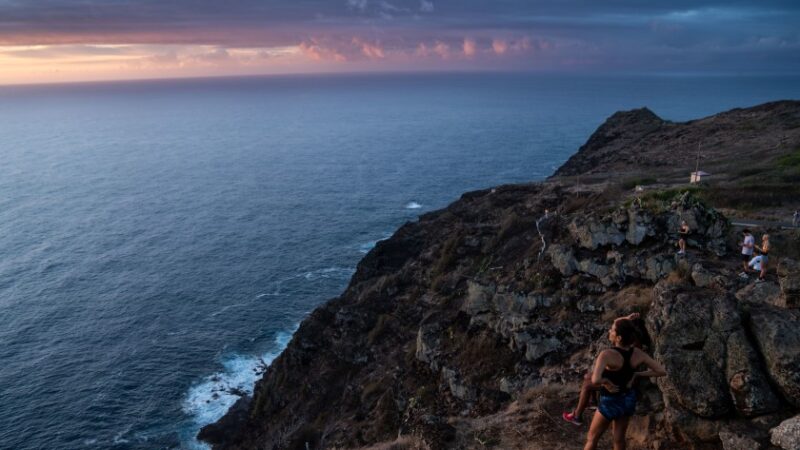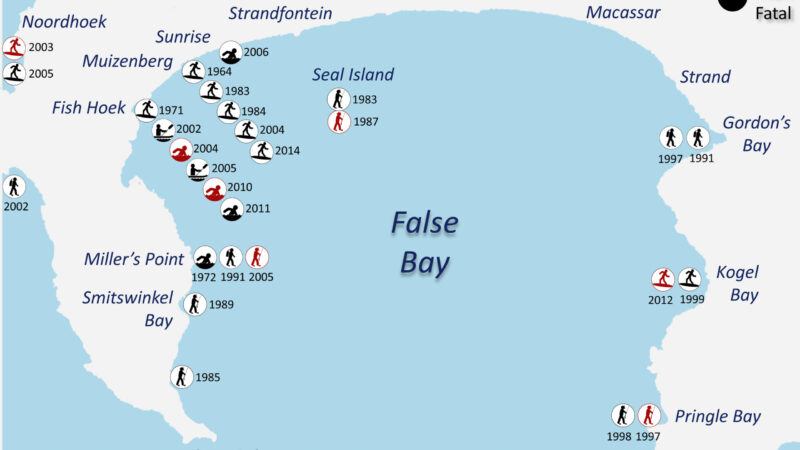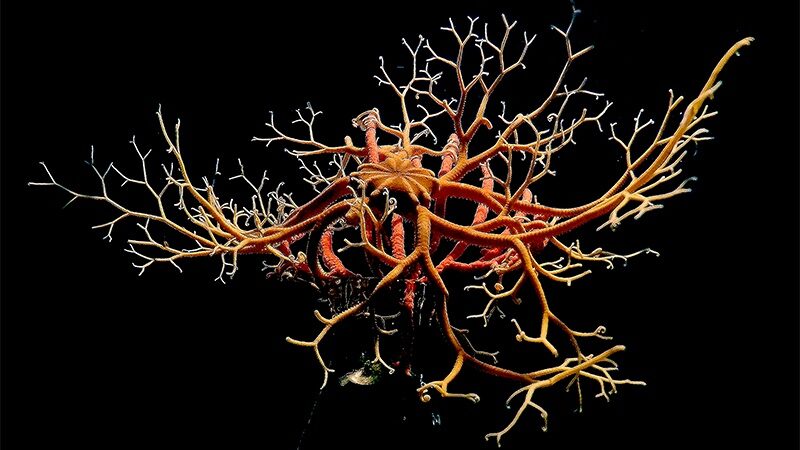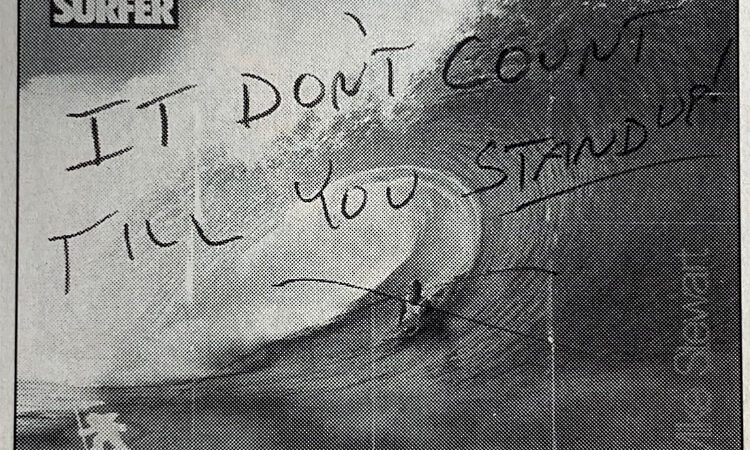Why is the APB World Tour out of mainland America? Is there a proper bodyboarding industry in the States? When will pro US riders return to the World Tour heat draws? Why aren’t there more bodyboarding contests in the USA? Riders and event organizers explained SurferToday what happened to American bodyboarding.
Today, bodyboarding is a global phenomenon. In less than 50 years – or in other words, since Tom Morey designed the world’s first boogie board – the sport crossed countries and continents.
In the past 30 years, there have been several world tour circuits: the International Morey Boogie Bodyboard Pro Championships, the GOB World Tour, IBA World Tour, and the APB Tour.
While Hawaii kept the Pipeline Pro running for decades, mainland America struggled to establish long-term events in the bodyboarding calendar. Despite the dozens of world-class peaks on offer both on the West and East Coast, bodyboard competitions have never stood the test of time. At least, at a world tour level.
Ironically, the always relevant US market seems to be indifferent to the growing popularity of bodyboarding. Where are the US bodyboarding brands? Who are the American pro riders?
The United States have thousands, if not millions of recreative weekend bodyboarders. It is probably the country with the largest number of active bodyboarding enthusiasts. So, what’s not happening?
The USBA legacy
Jason Bitzer is the founder of the United States Bodyboard Association (USBA). He was behind some of the most important bodyboard events in mainland America. Until his life took a new direction.
“After having my baby and taking a full-time lifeguard position on the North Shore, I tried to train new organizers in each region. We went through a few people and chose guys in California, Florida, and New Jersey. But I could not travel for the USBA I founded,” explains Bitzer.
“Steve Jackson was working with me, and he had a lot of passion, but once I left, he went to Brazil with his wife. A lot of the organizers just do not have the corporate and city connections I had made over the years, and funding is the main name of the game in any professional competition. Ben Severson picked up where I left off in Hawaii and is doing a good job, but money is still what makes it in the long run for large events.”
Jason Bitzer believes that for the money that is on offer, a lot of people don’t really have the stamina or passion for the sport that is needed to maintain and grow it.
“It’s a 5am-to-2am job and, during event days, it is a 22-hour day getting the webcast going alone. If you don’t have ten guys doing the level of work I was pulling off, it is not sustainable, and the wheels will eventually fall off.”
USBA stopped running contests in 2013 and, since then, mainland America hasn’t had a national circuit. Bitzer says it is tough to run the show without a structured organization.
“I was going to meetings with Toyota to get end-to-end checks for webcasts that I was also directing. It was nuts: we had 70 grand budgets for the US Open, and we gave $12,000 of that away to the riders. WSL has $3.5 million plus in sponsors and investment,” reveals the passionate bodyboarder from Manasquan.
“We piggybacked onto bigger things like AVP Volleyball and things of that nature to gain larger audiences. It was working. However, you really need to have a five-year solvency with investments, and long-term partners to get off the ground. Otherwise, each year you’re reinventing the wheel, and it is not feasible.”
Bitzer still hopes someone picks the USBA and gets it up and running. “I am all for helping them through the learning curves,” he states. But Jason also notes that there should be a solid amateur field because “without a base for competition, there will never be a proper pro field and structure. The goal of the USBA was to support the pros, but focus on US amateur bodyboarding.”

Where are the brands? Where are the riders?
USA has splendid peaks for pro bodyboarding. Can you imagine an APB World Tour stage at Newport Beach’s The Wedge, or a world title discussion at Jenks?
Kevin Jimenez is an experienced bodyboarder, and he also works for Mike Stewart’s Science Bodyboards. He witnessed both the ups and downs of the sport in California.
Jimenez still remembers when, between the 1990s and the 2000s, “we had a US Pro Tour (Bud Tour), lots of pro riders making an ‘okay’ living, and companies were keen to support and back riders, travel, and contests. For example, Toobs and Morey Bodyboards were huge back then.”
“Suddenly, those companies might have been sold to a new owner, and or just make customs for customers and put an end to supporting team riders, contests, and travel due to lack of funding.”
Jimenez says that the “majority of the US companies now are small brands and make boards for personal stoke, not mainstream. Which is why US riders can’t get that extra edge of support like overseas riders. Most riders and kids I’ve seen in California the past ten years have all been riding boards from Australia and Europe.”
“Don’t get me wrong; there are still hardcore riders here in California riding Toobs, Science, Custom X, and other US branded companies. But the new generation is seeking out to the overseas brands because they have the highest recognition in the sport. Why not ride the brands that the best riders are riding?” adds Kevin Jimenez.
The Californian bodyboarder concludes that, in the end, money still rules the game. “Most brands don’t make that much money to give back to the sport and, if they do, they go back into their own pockets, not team riders, comps, etc.”
Jimenez also underlines that “even if we had a contest scene here in the US, the waiting periods would be tough and even with waves, they wouldn’t be anything like other high-performance waves in the world.”
Dave Hubbard, multiple-time Drop-Knee world champion, thinks that since the sport’s initial growth spurt, it seems as if bodyboarding in America has continued to deflate.” However, the co-founder of Hubboards, remembers how important USBA was to bodyboarding in mainland America.
“There was a time not too long ago, that the USBA was working hard to maintain and grow a national tour that has since folded. Most of the riders competing on that tour were from Hawaii. Specific events would naturally draw local entrants, but there may have been almost as many riders from Puerto Rico competing throughout the whole tour, as there were Americans,” Hubbard tells SurferToday.
“The collapse of notable Pro/Am events, as well as a ‘governing body,’ coincided with the global shake-up, as the world tour of bodyboarding switched from the IBA to the APB. At this time, it is possible that in the next years the APB would be in a position to seek out North America as a viable region to develop.”
Dave Hubbard also stresses the bad luck USBA had a few years ago when one of the top venues – the Jenks Pro – was devastated by Hurricane Sandy. The Drop-Knee specialist notes that “no one has since stepped up to put in the commitment and energy into American bodyboarding that is necessary to operate a tour or governing body.”

Is surfing slowly killing bodyboarding?
Mike Stewart, nine-time world bodyboarding champion, believes that the US scene has problems with the product market, with a blind surf industry, with surfing federations, and surf schools.
“There is a lot of cheap product from Asia companies – unrelated to wave riding – profiting from beginners and putting nothing back to develop the sport. The days of two or three companies dominating the market and developing their market for profit share have dissolved with the Asian invasion,” states Stewart.
“Surf industry has shunned bodyboarders for almost 20 years now. Even though these bigger companies seem to be plummeting in value, their collective mass, influence, and finance over the last 20 years have played a significant role in suppressing the development of bodyboarding. The strange thing is that a large part of their failings result from losing the very spirit that bodyboarding represents.”
The Hawaiian waterman also believes that “surfing federations have further suppressed bodyboarding by channeling funds into hardboard surfing” and that there has been “a proliferation of surf schools not focused on bodyboarding.”
On the flip side, Mike Stewart notes that there are more “hardcore and technical bodyboarders, even if they’re secluded to core pockets in California.” However, “the opportunity for bodyboarders and bodyboarding schools abound.”
Fortunately, he adds, “Hawaii, the birthplace of modern wave riding – and where the modern bodyboard originated from – has a thriving bodyboarding culture and event series. Perhaps just a little while off before this reaches the West Coast again.”
The future of US bodyboarding
Can competitive bodyboarding in the USA re-emerge from the ashes? Who’s ready to lead America’s governing body for the sport? According to the Association of Professional Bodyboarding (APB), there’s good news ahead.
“We are working with the Hawaiian Tour and various riders out of USA to develop the region and create an APB Office in the USA within the next 12-24 months,” Alex Leon, CEO of the APB, tells SurferToday.
“Mainland USA is a key region for bodyboarding, and the APB recognizes this. The USA needs the foundations and structure put in place to develop and grow just as other regions like South America and Europe have in the past few years.”
For now, American bodyboarders are restricted to the historic Bodyboarder International Association (BIA). The Californian bodyboarding contest has been crowning champions for 20 years and, hopefully, it will continue to keep the competitive spirit alive in the Golden State.
One thing is clear: US bodyboarding is not dead. The comeback is right on track.





Recent Comments